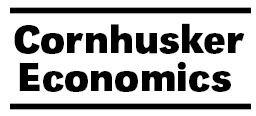Agricultural Economics, Department of

Cornhusker Economics
Date of this Version
September 2004
Document Type
Newsletter Issue
Citation
Cornhusker Economics
Abstract
USDAs Risk Management Agency (RMA) offered livestock producers in selected pilot states, including Nebraska, a new insurance product in 2003 called Livestock Risk Protection (LRP). It provided down-side price risk protection while allowing producers to take advantage of higher prices, similar to creating a floor price by purchasing put options. Premiums for LRP insurance changed daily and depended on current market prices and market volatility. Unlike put option premiums that change based on the current day’s futures trade, LRP premiums were determined using the previous days futures and options prices. Since LRP could be purchased until 8:00 p.m. based on the previous day’s prices, it created an opportunity for adverse selection by enabling producers to purchase price insurance after knowing how the current day’s price changed. In cases where market prices decreased (increased) today, the same LRP insurance would be more (less) expensive tomorrow.


Comments
Published in Cornhusker Economics, 09/08/2004. Produced by the Cooperative Extension, Institute of Agriculture and Natural Resources, Department of Agricultural Economics, University of Nebraska–Lincoln.
http://www.agecon.unl.edu/Cornhuskereconomics.html